Publications
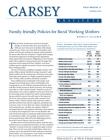
September 8, 2009
For working parents, family friendly work policies like paid sick days, flexible time, or medical insurance can reduce work-family conflict and lead to less absenteeism and higher productivity. Working parents in rural America, however, have less access to these policies than their urban counterparts.

October 1, 2008
Rural communities working to find strategies for success in today's economy need to rethink the tools they are using. Brown-Graham is the executive director of the Institute for Emerging Issues and a policy fellow at the Carsey Institute. William Lambe is the associate director at the Community and Economic Development Program at the School of Government, University of North Carolina at…
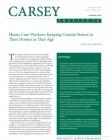
September 15, 2009
Using data from the New Hampshire Direct Care Workforce Survey, this brief shows that New Hampshire's demand for home-based care workers outpaces supply because its population is aging at a faster rate than the national average. These workers play a critical role and face many challenges, including low pay, little or no paid time off, and lack of access to health insurance.

September 12, 2008
At the turn of the 20th century, New Hampshire had over 88,000 foreign-born persons, over 15,000 more than it has today. In 1900, the state's concentration of foreign born (21 percent) was higher than the national average percentage and more than three times the current percentage of 6 percent in the state. In 1900, New Hampshire ranked 15th of all states in percentage of the foreign-born…

August 20, 2008
New U.S. Census Bureau data released in August highlight increasing similarities of poverty rates between children in urban and rural communities. This common indicator of child well-being is closely linked to undesirable outcomes in areas such as health, education, emotional welfare, and delinquency.
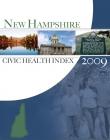
October 1, 2009
The Carsey Institute is participating in a national study to examine America's civic health. Led by the National Conference on Citizenship (NCoC), America's Civic Health Index is an annual study that measures a wide variety of civic indicators, such as community involvement and helping others. New Hampshire is one of six states partnering with NCoC to produce a state-specific report…

August 13, 2008
Data in this brief shows that the percentages of children living in low-income areas and poverty over the past fifteen years in rural and urban America are converging.
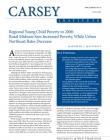
September 29, 2009
In 2008, America's recession affected poverty rates for children under age 6 unevenly, with rates in the rural Midwest rising significantly, while rates in northeastern central cities fell slightly. And in the rural South, where more than 30 percent of young children are poor, poverty rates for young children persisted at a very high rate. This is an analysis of American Community Survey…

August 7, 2008
Natural increase—more births than deaths—is now the major engine of Hispanic population growth in many large metro areas and their suburbs, as well as numerous smaller metropolitan areas and rural communities. Hispanics now account for half of U.S. population growth, and Hispanic population growth is the reason many communities grew instead of declined.
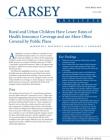
October 1, 2009
This Carsey brief looks at the geographic distribution of health insurance for children. Based on data from the 2008 American Community Survey, it includes such findings as one in ten children are still uninsured, insurance rates vary considerably by geographic area, and rural children are most likely to depend on public plans for their health care.
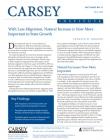
October 23, 2009
According to Johnson's analysis of U.S. Census Bureau data, the nation continues to experience reduced levels of domestic migration (movement from one state to another) as a result of the economic recession, and natural increases (births versus deaths) are an increasingly important factor in population gains.
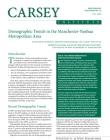
October 26, 2009
In the city of Manchester, New Hampshire, 25 percent of children live below the poverty line, a high rate that is in stark contrast to the state's rate of just 10 percent, one of the nation's lowest. That is the most surprising finding from this new analysis of demographic trends in the Manchester-Nashua metropolitan area. The brief presents recent demographic shifts in Manchester,…
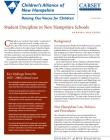
October 27, 2009
A new analysis of student discipline in New Hampshire schools in the 2007–2008 school year shows that out-of-school suspension rates are higher and statewide expulsion rates are lower than the national average. Schools reporting the highest rates of suspensions and expulsions are the smallest in the state and have the highest percentage of students in poverty. This brief is the first in a…
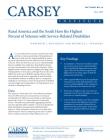
November 10, 2009
Veterans with service-related disabilities are concentrated in the American South and in rural places, this new fact sheet finds. Issued to commemorate Veterans Day (November 11), the report analyzes new data from the U.S. Census Bureau's 2008 American Community Survey, which released service-related disability data for the first time.
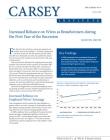
December 4, 2009
Among low-income families, the wages of employed wives account for the majority of family earnings, according to this Carsey brief. The analysis finds that in 2008, women contributed 56 percent of total family earnings, up from 51 percent in 2007. Also, husbands' education level and race are factors in how much wives contribute to family earnings.
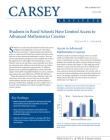
December 16, 2009
This Carsey brief reveals that students in rural areas and small towns have less access to higher-level mathematics courses than students in urban settings, which results in serious educational consequences, including lower scores on assessment tests and fewer qualified students entering science, technology, engineering, and mathematics (STEM) job pipelines.
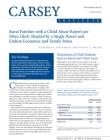
January 1, 2010
This brief, which is based on data from the National Survey of Child and Adolescent Well-Being, finds that rural families who have been reported to Child Protective Services are more likely than urban families to have financial difficulties and high family stress, as well as grow up in single-parent households. To effectively address these issues, the brief urges policy makers to look at the lack…
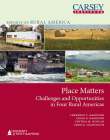
July 17, 2008
A survey of 7,800 rural Americans in 19 counties across the country has led to the Carsey Institute's first major publication that outlines four distinctly different rural Americas—amenity, decline, chronic poverty, and those communities in decline that are also amenity-rich—each has unique challenges in this modern era that will require different policies than their rural neighbors.
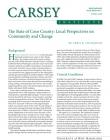
May 21, 2008
Coös County residents are largely optimistic about their future despite significant economic challenges, especially in the Berlin/Gorham area. As part of a three-pronged effort to understand the ongoing changes in New Hampshire's North Country and surrounding counties, researchers at the Carsey Institute have surveyed more than 1,700 adult residents of Coös County, New Hampshire, and Oxford…
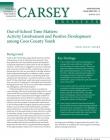
January 1, 2010
This brief looks at the connections between how youth spend their free time and positive or negative attitudes about themselves and their future plans. Family studies assistant professor and Carsey faculty fellow Erin Hiley Sharp used data from the Carsey Institute's Coos County Youth Survey to show differences by activity level and students' expectations for positive outcomes in their…
